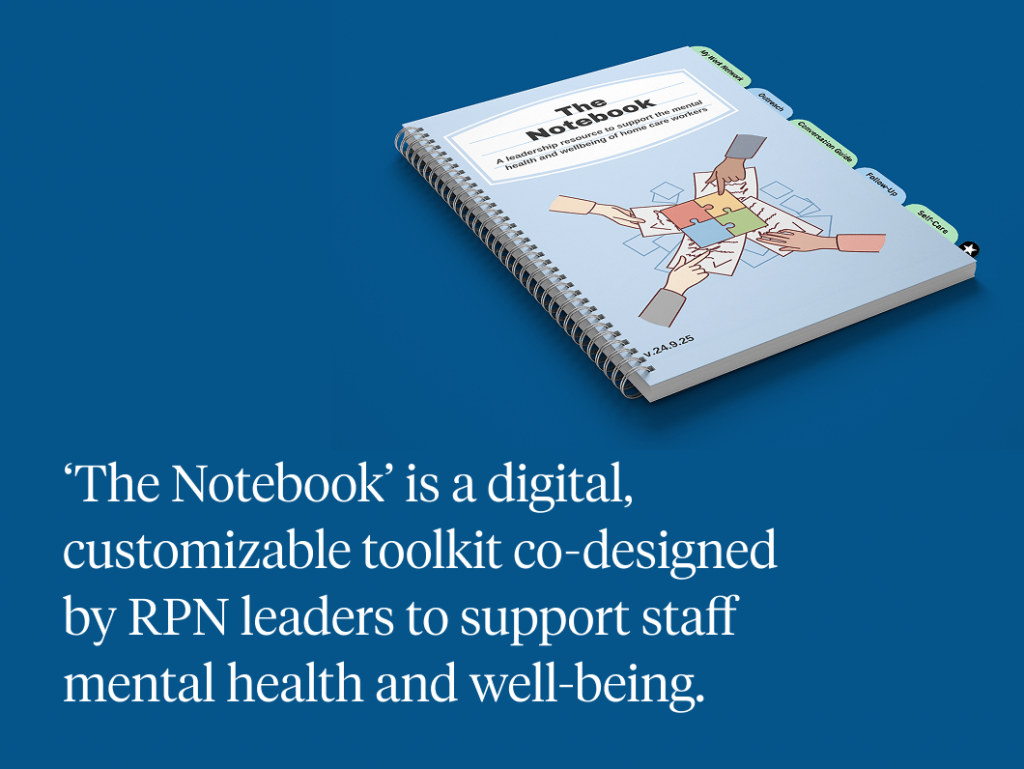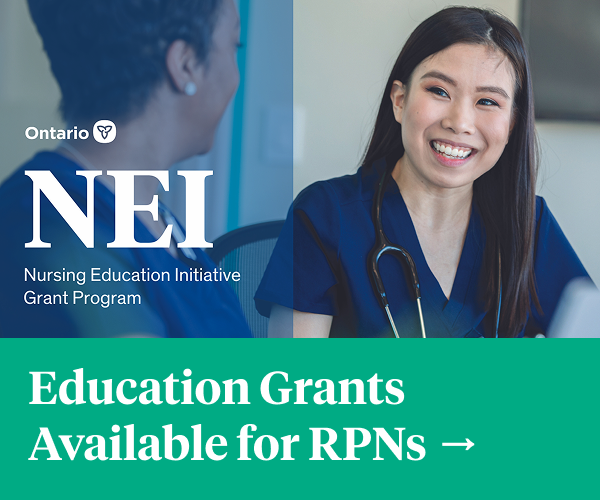

RPN leaders in the home and community care sector support large clinical teams, including personal support workers (PSWs), home support workers, and other community-based providers. Their role is multifaceted, integrating critical tasks like onboarding, training, performance management, and ensuring clients receive safe, high-quality care. One often overlooked aspect is monitoring and addressing team mental health and well-being.
Mental and emotional strain on home and community care workers reached new heights during the COVID-19 pandemic. Strong leadership emerged as a key factor in supporting staff resilience, and compassionate RPN leaders were identified as pivotal in helping workers manage and recover from the stresses of the pandemic.
That said, many RPN leaders report feeling underprepared to support their teams in navigating mental health challenges. In a sector where the demands on leadership are already high, leaders often find themselves balancing competing priorities without the right tools or necessary training to effectively address mental health and well-being.
Without the proper resources, RPN leaders may struggle to provide support or spend excessive time looking for external services, potentially at the expense of their own well-being.
Equipping RPN leaders with the resources they need
VHA Home HealthCare led a participatory project across Ontario, engaging RPN leaders in home and community care to co-design a tool to assist leaders in better supporting their teams. Co-designing places RPN leaders at the center of decision-making so that the tools and strategies developed are directly relevant, practical, and aligned with their needs.
RPNs designing solutions for RPNs
RPN leaders participated in virtual co-design workshops and engaged in collaborative design thinking to imagine and build a tool to better support their emotional support practices. With the help of the digital collaboration platform Mural, RPNs from diverse experiences and geographies came together to shape a prototype that met their needs.
RPN leaders identified five key design requirements for the tool:
Digital Accessibility & Customization:
Integrate seamlessly into their on-the-go workflows.
Context-Specific Language:
Uses the language of home and community care.
Best Practices & Tips:
Practical strategies for monitoring and supporting staff mental health, such as recognizing burnout, practicing mindfulness, and facilitating sensitive conversations.
Integration with Existing Resources:
Allow customization based on each leader’s practice setting and incorporate existing workplace resources.
Community Resource Directory:
Region-specific health and social care services to help leaders address the diverse needs of their teams.
Beyond these practical features, RPN leaders emphasized the importance of organizational support for adoption— especially the need for protected time to engage in the critical work of supporting staff mental health.


Introducing ‘The Notebook’ – A resource and toolkit to support RPN leadership practice
From these requirements, we co-created a prototype called ‘The Notebook’. This tool represents the resources RPN leaders need to monitor and support mental health and well-being across their care teams.
The Notebook is envisioned as a living toolbox—a dynamic resource filled with essential, easy-to-reference information to guide RPN leaders when addressing staff mental health challenges. Its design mimics the feel of a physical notebook, something familiar yet easily accessible in a digital format and adaptable to changing needs.
The prototype features nine interactive ‘folder tabs,’ each covering a specific topic identified by the RPN leaders. The content is structured and fillable, allowing users to customize the tool based on the teams’ unique needs.
Supporting RPN Leaders in Practice
This work shows that while RPN leaders already demonstrate immense compassion and practical strategies in supporting staff, they need additional resources and structures to respond appropriately to staff mental health.
Making this tool a reality
The journey doesn’t end here. We’re continuing to refine the prototype based on ongoing feedback from RPN leaders and working to identify the best structures for implementation, evaluation, and sustainability. While we’re excited to explore how this could be rolled out at VHA, we know the need for this kind of resource goes beyond our organization.
We’re eager to hear from the broader RPN leader community: Could ‘The Notebook’ work for you? How would you implement it at your own organization? Let’s continue the conversation and find ways to support RPN leaders across the home and community care sector in tackling the critical challenge of staff well-being.

